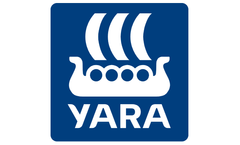Maize Grain Articles & Analysis
17 articles found
The following Table illustrates some feeding stuff and their mycotoxins content (Abdelhamid, 1980, 1983a - e, 1985, 1990, 2000b & 2005 and Abdelhamid et al., 1996): Feeds Mycotoxins Bone meal Vomitoxin and Zearalenone Cottonseed, Rice bran Aflatoxin-B1, Citrinin, Ochratoxin-A, Vomitoxin, and Zearalenone Grains Aflatoxin-B1 & G1, Citrinin and Ochratoxin-A ...
Tackling Malawi's Hidden Hunger through Selenium and Iodine biofortification to green vegetables and conservation agriculture (CA) field crops Introduction In sub-Saharan Africa, micronutrient deficiencies are common in poor and rural areas, due to over-farmed, depleted soils and restricted diets. In Malawi, three-quarters of the population are selenium-deficient, which can lead to weakened ...
Corn stover using as a fuel in Mozambique Corn Stover is the stalk and leaf residues from harvesting maize for grain, and it may be used as a biomass source in the same ways as straw. ...
Three irrigation treatments and four maize hybrids were studied. In the extremely rainy 2010, the highest yield of maize grain was obtained in rainfed plots (control = 9.24 t ha−1). ...
As part of a cooperative of 46 farmers with approximately 1400 hectares, Kläber is applying both brains and skills to make sure they do their utmost to increase their yields of grain, maize and rapeseed. In the past decade, however, another factor has become crucial to the way they operate: environmental impact. ...
The use of maize (Zea mays L.) stover as a feedstock for cellulosic biofuels production will create demand for maize hybrids with greater stover yield. ...
The objective of this study was to determine climatic and genetic factors contributing to genotype (G), environment (E), and genotype x environment (GE) variability for maize (Zea mays L.) grain yield under some stress conditions like drought, cold, and pest attack. A large sample of Spanish maize populations was evaluated along with checks at ...
The objective of this study was to determine the effect of four cover crops on maize (Zea mays L.) grain yields in two fields that had been under DMC for 3 and 14 yr. ...
This study was conducted to determine the medium- to long-term influence of OR quality and quantity on maize productivity and to evaluate the occurrence of additive benefits in terms of extra grain yield produced by the combined application of ORs and N fertilizers. ...
The objective of this study was to determine the effect of four cover crops on maize (Zea mays L.) grain yields in two fields that had been under DMC for 3 and 14 yr. ...
Fertilizer N inputs were from a survey of the watershed and yield data from county estimates that were combined with estimated protein contents to obtain grain N. By using maize fertilizer recovery and soybean N2 fixation to estimate total grain N derived from soil, we calculated the explicit change in soil N storage each year. Overall, ...
Information regarding genotypic variability for maize (Zea mays L.) grain-filling patterns is scarce, especially at the inbred level. ...
We studied the effect of daytime and nighttime irrigation on the growth and yield of maize (Zea mays L.) irrigated with a solid-set sprinkler system. Two irrigation treatments were tested: daytime irrigation (starting at 1000 Greenwich Mean Time, GMT) and nighttime irrigation (starting at 2200 GMT). ...
Fertilizer N inputs were from a survey of the watershed and yield data from county estimates that were combined with estimated protein contents to obtain grain N. By using maize fertilizer recovery and soybean N2 fixation to estimate total grain N derived from soil, we calculated the explicit change in soil N storage each year. Overall, ...
A total of 148 on-farm N-response experiments, in seven key summer maize (Zea mays L.) production regions of North China Plain (NCP) from 2003 to 2005, were conducted to evaluate the Nmin–based N management compared to traditional farmer's N practices. ...
The objective of this research was to test and improve the CERES-Maize model (CERES-4.0) for ability to predict accurately maize biomass and grain yield components under water-limiting conditions in an environment where the model had previously given good predictions under irrigated conditions. ...
The objectives of this study were (i) to examine the relationships among NDVI determined early in the growing season, soil color-based management zones (SCMZ), and relative maize (Zea mays L.) grain yield and (ii) to determine if coupling soil color-based management zones with NDVI improves the accuracy of soil color-based management zone precision crop ...





